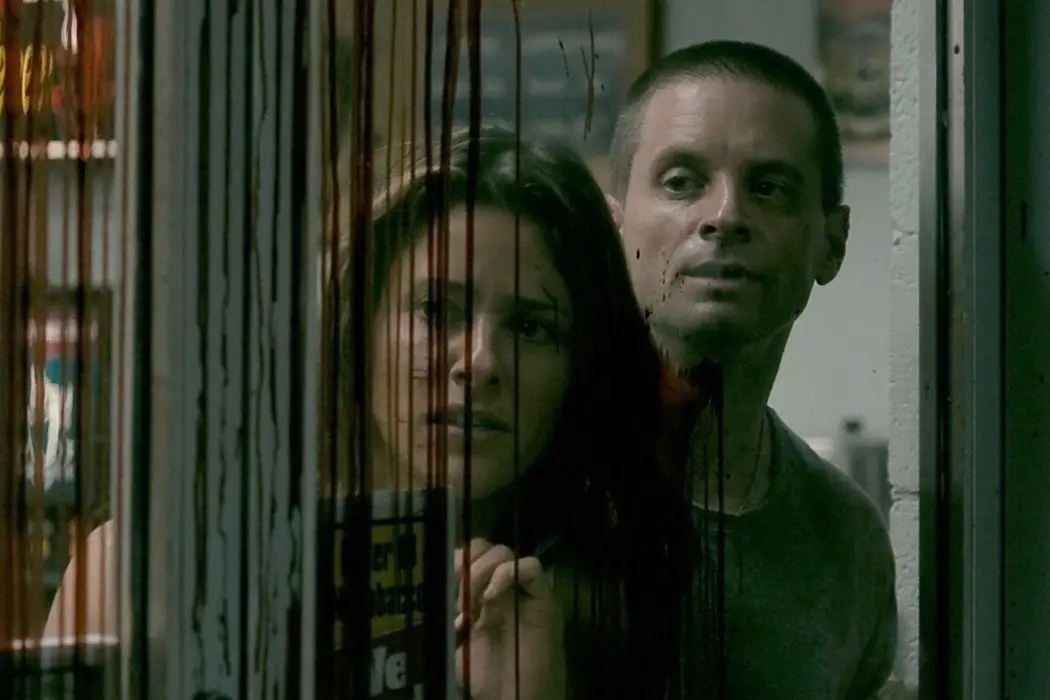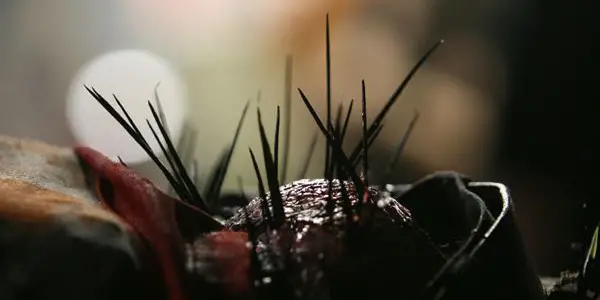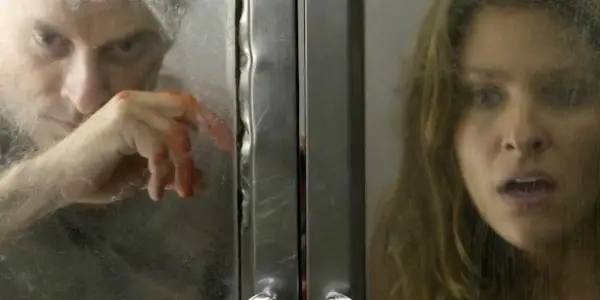Horrific Inquiry: SPLINTER (2008)

Stephanie Archer is 39 year old film fanatic living in…
Welcome back to the newest, and at times goriest, column here at Film Inquiry – Horrific Inquiry. Twice a month, I will be tackling all things horror, each month bringing two films back into the spotlight to terrify and frighten once more. And occasionally looking at those that could have pushed the envelope further. Join us as we dive deep into the heart of horror, but warning, there will be spoilers.
Kicking of January, I found my inspiration close to home, a friend’s birthday bringing to the foreground one of her favorite films – Splinter. This was a film she had tried quite a while to get me to see, and one I have been unable to forget about since. There is a B grade quality to the film, teetering on the line of high-quality horror and an almost campy feel. The deep contrast and night setting enhance the ominous nature of the film’s “creature” and the purposeful use of gore and jump scares. Though, as the credits roll, it is the growing spikes that will be imprinted on your mind. Let us dive into the horror of Splinter.
It’s Just a Prick
From the very beginning, Splinter wastes no time earning the attention of its audience, the intro cutting between the attack of a local gas attendant (played by Charles Baker known best as Skinny Pete from Breaking Bad) and the film’s opening credits, the score changing with each transition, even reminiscent at times of the unforgettable score of The Texas Chainsaw Massacre. While the beginning launches into action, Splinter immediately falls back on classic B film narratives, suffering at times from too much exposition and a drawn out pace in its execution – though don’t leave right away as the film is instantly redeemed once the action kicks off.

Following the attack on the gas attendant, viewers are introduced to our central players: Seth (Paulo Costanzo) and Polly (Jill Wagner) attempting a camping get away to celebrate their anniversary and Dennis (Shea Whigham) and Lacey (Rachel Kerbs) on the run from the law. It takes the film a bit to get them all together, but the moment their lives become intertwined is when the action, and the gore, truly kick-off.
It starts off small, the four running over a strange animal that wrecks the car, yet builds dramatically, each kills more devastating and gorier than the last. What truly elevates Splinter though is in between the gore and the terror with each character given moments to show who they are. It is not just simply the drug addict who wanders into her death, but rather an intelligent young woman whose addiction lies deeper in a potential mental illness. Polly is not just the girl that runs up the stairs, she is a “firecracker” that is ready and willing to fight. And Seth and Dennis, they become an unmistakeable break down of traditional male horror constructs – but more on that later.
Imagery and more
The imagery of Splinter is what I found stayed with me the most. For many horror films of this nature, it is the gory imagery that I remember most – films such as Hostel, Saw and The Cube, just to name a few, are remembered for their kills and the graphic nature in which they were enacted. Splinter, however, is different. Rewatching the film, I found myself surprised by how much of the gore I didn’t remember, realizing that the imagery and construction of the growing spikes on the victims had a lasting impression all these years later. There is an eeriness and an ominous nature to these spikes, the protrusions stretching beyond the bodies they are consuming, morphing the image more horrifically than just a simple kill.

Splinter is not a knock out of the park kind of horror with parts that read as cheesy and sometimes overdone. And as a viewer, you will most likely come up with three better plans of action for surviving the night than the characters bumbling around on the screen. Yet, it is as fun as it is terrifying, the unknown and rapidly moving creature leaving a lot for your mind to fill in the blanks. There is room for the creativity of the viewer’s mind to seep in, to take the imagery and the intense score and build upon it. And it’s not always a guarantee that when a film reaches its final shot you will find yourself wishing for more, but Splinter achieves just that. Followed by the disappointment that twelve years later, we are only left to wonder how bad it could have really gotten in the sequel.
Hypomasculinity vs. Hypermasculinity
While Splinter does not do much to break down the horror tropes surrounding females in horror films, there is an interesting examination of the stereotypical representations of men in a horror film. Typically, most characters in a gory, made for scares horror film are one layered, little depth provided beyond their typical depictions. Both the hypermasculine and the hypermasculine are usually brought to life in a predictable fashion – with their deaths just as easily foreseeable.
Traditionally, there is the nerd and an over feminized male who is “punished” for his feminine and nerdy behaviors and traits. Contrasting, there is typically the “bad” guy, the tough and brooding individual who lacks respect for women, men or others. Both of these characters typically find their demise in horror films, the latter usually the first to go due to his poor treatment of the women surrounding him, his sexual prowess, and poor behavior.

But with Splinter, there is a duality presented. The biologist is working on his doctorate, and while he is presented to audiences as more feminine (unable to camp and deal with the outdoors or protect his girlfriend), his multilayered depiction opens up the opportunity to show his value and depth differently. He is the one that risks his life to save them, he is the one that figures out the primal functioning of the creature and he shows compassion. He is not just the nerd buried within his theories, computers, and gadgets (see Randy in Scream and Scream 2 or Robbie in Scream 4 – both drunk during the massacres, both meeting an untimely end). He is effective in finding a solution and bringing it to its fruition.
Similarly, the same can be said about the tough guy on the wrong side of the law. Typically he is the first to go, his death a form of retribution for how he lived his life (see Barry in I Know What You Did Last Summer). In Splinter, however, he is not only allowed to continue until the film’s final act, but he is also given increasing moments of redemption – a man looking for peace and a second chance. While he does betray his attempts to steer on the right side of the tracks, his anger many times his undoing, there is always an underlying desire to try. When they are at the gas station, he tries fervently to get an attendant to cash him out when he could have easily stolen it to avoid detection. He talks about the money he is trying to retrieve, its final necessity not for him but for the mother of a man he killed, his guilt and desire to correct the wrongdoings of the past apparent. All this and more culminate into his final moments of self-sacrifice.
Conclusion: Splinter
As many of us find ourselves holed up in our homes, quarantines, and lockdowns still apart of everyday life, many will find themselves looking to the past for rematches or films they may have missed. In a retrospective world, now is the time to revisit Splinter – or to discover it for the first time. You won’t be disappointed.
What did you think of Splinter? Let us know in the comments below!
Watch Splinter
Does content like this matter to you?
Become a Member and support film journalism. Unlock access to all of Film Inquiry`s great articles. Join a community of like-minded readers who are passionate about cinema - get access to our private members Network, give back to independent filmmakers, and more.













